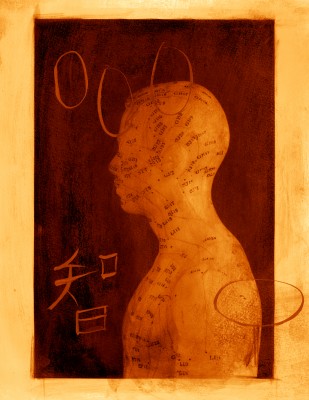 Every woman knows (and most men if they know what’s good for them) that emotional states are tied to hormonal fluctuations. The most commonly talked about example of this is Premenstrual Syndrome (PMS). First documented in the 1930’s, PMS is a complex syndrome encompassing hundreds of possible physical and psychological symptoms. These can occur anywhere from a few days to two weeks prior to the onset of menses. Common emotional symptoms include: irritability, depression, anxiety, mood swings and sleep disturbances. While up to one third of menstruating women experience PMS, it is estimated that 20% of reproductive aged women have moderate to severe PMS. Common Western treatments to reduce PMS symptoms such as the birth control pill and antidepressants are geared towards hormonal and brain chemistry stabilization.
Every woman knows (and most men if they know what’s good for them) that emotional states are tied to hormonal fluctuations. The most commonly talked about example of this is Premenstrual Syndrome (PMS). First documented in the 1930’s, PMS is a complex syndrome encompassing hundreds of possible physical and psychological symptoms. These can occur anywhere from a few days to two weeks prior to the onset of menses. Common emotional symptoms include: irritability, depression, anxiety, mood swings and sleep disturbances. While up to one third of menstruating women experience PMS, it is estimated that 20% of reproductive aged women have moderate to severe PMS. Common Western treatments to reduce PMS symptoms such as the birth control pill and antidepressants are geared towards hormonal and brain chemistry stabilization.
While we in the West are just starting to understand the relationship between moods and hormonal shifts, these concepts were outlined in Chinese medical texts thousands of years ago. These books describe the connection between emotional states and hormonal balance as the relationship between the heart and the uterus. Rather than the brain being the organ that determines behavior, in Chinese medical theory, this is the heart’s domain.The written Chinese language is comprised of characters which are essentially simplified pictures. The characters for the heart protector and the uterus are almost identical. The difference is that the character for uterus encompasses the concept of “flesh”. As the Heart pumps blood, the uterus also rhythmically fills and empties with blood. The heart beat indicates the surging of life, while the uterus is where life grows and is protected. Thus, the uterus functions as a woman’s second heart.
The heart and the uterus communicate with each other via the bao mai which literally translates to “uterus vessel”. Every month blood comes down from the heart through the bao mai and settles in the uterus, allowing the uterus potential to nourish an embryo. The bao mai must be open and unimpeded for menstruation and conception to occur. If this link is disrupted women can experience PMS symptoms in addition to irregular menstrual cycles and subfertility. How does this disruption occur? Stress and emotional upheavals are both the cause and effect of a blockage in the bao mai.
When we look at this practically, it makes intuitive sense. Most women have experienced the consequences of a bao mai blockage. For example, almost universally, women find their PMS gets worse in times of increased stress and pressure. Also, many women have had the experience of missing a period due to emotional duress.
The wisdom of Chinese medicine tells us that both the heart and the uterus are intimately connecting and that the healthy functioning of one depends on the other.





